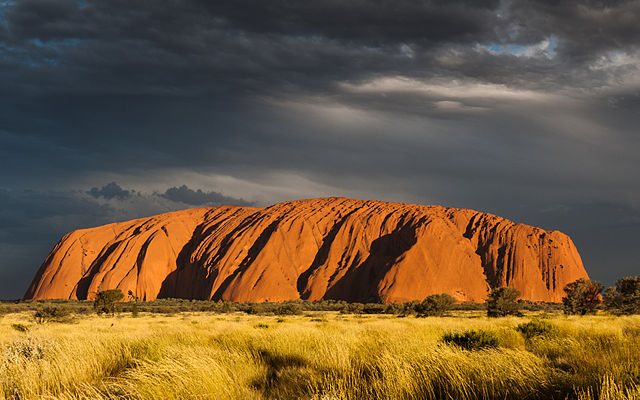Ayers Rock Facts
Ayers Rock is a large sandstone rock formation located in the southern part of the Northern Territory in Australia. It is sacred to the Pitjantjatjara Anangu, the Aboriginal people of the area where a lot of springs, waterholes, rock caves and ancient paintings can be found.
Ayers Rock is one of Australia's most recognisable natural landmarks and is listed as a UNESCO World Heritage Site.
Below are some of the facts about Ayers Rock:
- Ayers rock is popularly known as Uluru in Australia.
- In 1873 it was named so by William Gosse after Sir Henry Ayers, the then Chief Secretary of South Australia. He was also the first person to climb the Rock.
- However, before him in 1872 explorer Ernest Giles was the first white person to see the Ayers rock.
- Since 2002 this landmark is known as both Ayers Rock and Uluru and is one of the very few locations with dual name.
- The Rocks is about 3.6 kms in length, 1.9 kms wide. However, it is not the largest monolith of the world. Mount Augustus in Western Australia holds the record.
- Ayers rock was originally formed under ocean about 600 million years ago and with time it has gradually hardened.
- At its tallest point Uluru stands at 348 meters above the sea level.
- It is considered as land iceberg as the main majority of the landmass is still underground that is more than 2.5 km long.
- The Anangu tribe are the traditional land owners of this place and they consider the Ayers rock as a scared site.
- It is not illegal to climb the rock but according to the Aboriginal culture it is disrespectful. There have been 37 deaths since 1050 for those who had tried to climb the rock without giving value to the practices by the tribal.
- Alice Spring is the largest town near to Uluru and it is about 450 km away.
- The best thing about Ayers rock is its sunset. There is a red hue found in the sky mainly because of the minerals in the sand, the angle of the sun and the reflection in the surrounding soil.
- There are other rock formation in the Uluru-Kata Tjuta National Park like the Kata Tjuta. It means "many heads."
- The climate of this region is desert climate but the rock receives a surprising amount of rainfall when compared to other desert land. It had annual rainfall of about 200 - 250 mm.
- Both Kata Tjuta and Uluru are the part of the huge underground rock that lies under the ground.
- Ayers rock is made up of Arkos sandstone. Its natural color is grey but it has a red color view because of the iron content that is rusting at the surface. It is giving it a red iron oxide coating.
